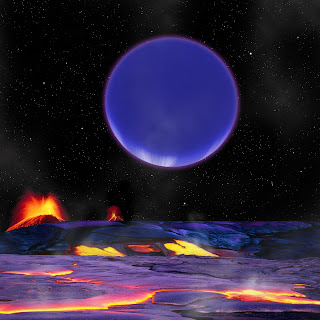The strangeness of this system is not related to the physical characteristics of the two planets. Kepler 36b is in fact a Super Earth with a diameter and a mass respectively 1.5 and 4.5 times greater than that of our planet. The second exoplanet, Kepler 36c, is instead a gas giant classified as a mini Neptune: its radius is 3.7 times that of the Earth and its mass is 8 times that of our planet.
The strangeness of this system is to be found in the orbits of the two planets. In fact, both orbit very close to their star, inside the system's habitable zone.
Kepler 36b moves on an orbit with a semi-major axis of 0.115 AU, while that of Kepler 36c is 0.128 AU. The two planets also find themselves in an orbital resonance that brings them every 97 days to approach at a distance of only 2 million km: this is equivalent to just 5 times the Earth-Moon distance!
Think of the spectacle that can be admired from the surface of Kepler 36b: at the minimum distance Kepler 36c would appear imposing in the sky, with an angular diameter three times greater than that of the full Moon.
However, this vision cannot be enjoyed by any living being: it is in fact impossible for life forms to develop on these two planets. Kepler 36b is in fact most likely a volcanic world due to tidal interactions with Kepler 36c. Furthermore, the two planets are located outside the habitable zone, where therefore liquid water cannot exist.
Credit: Harvard-Smithsonian Center for Astrophysics/David Aguilar.


Post a Comment